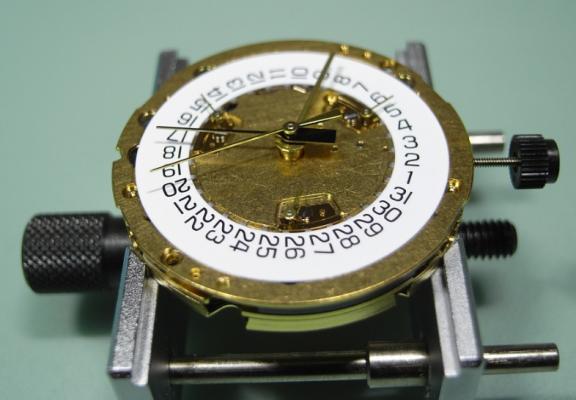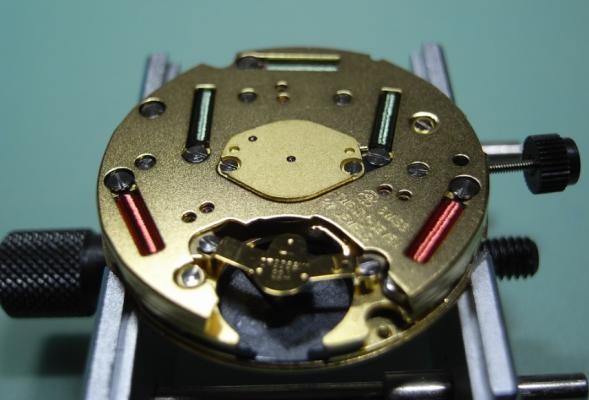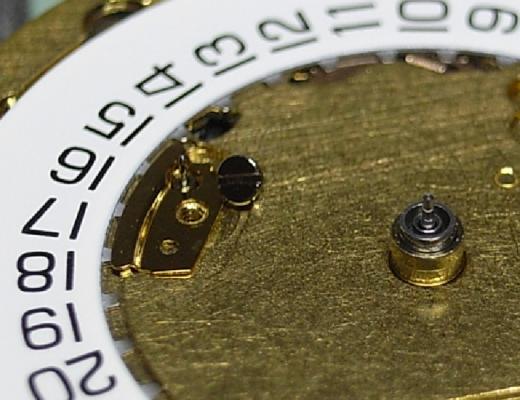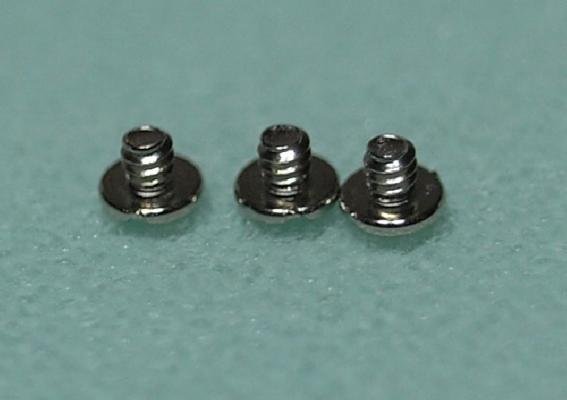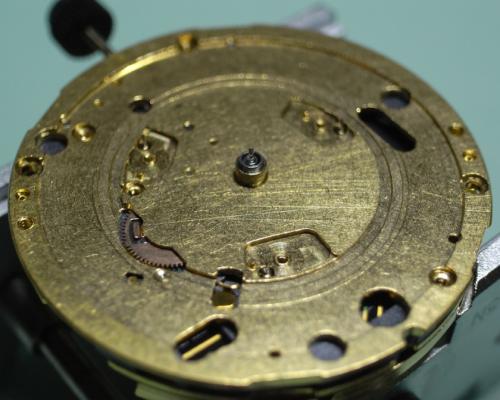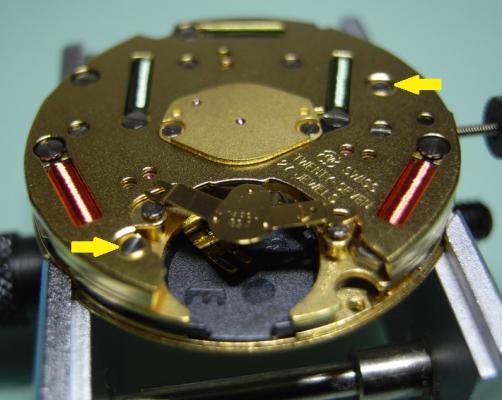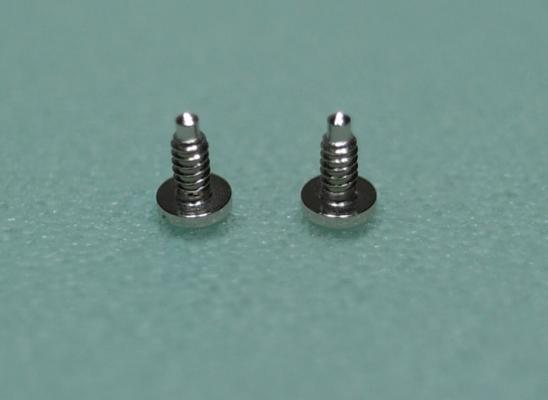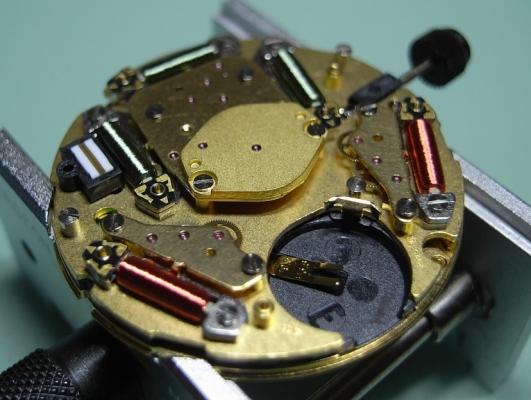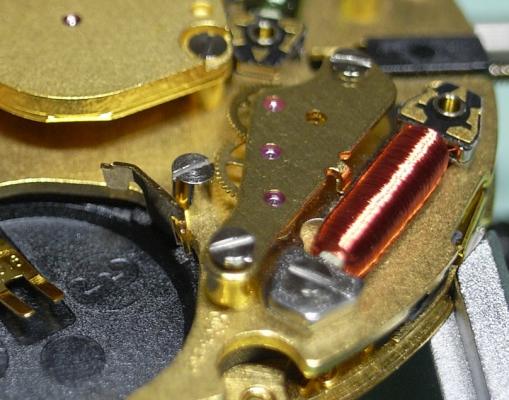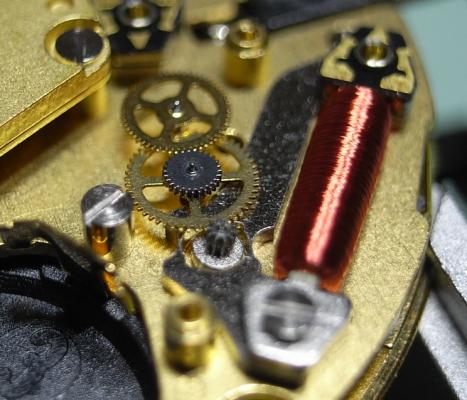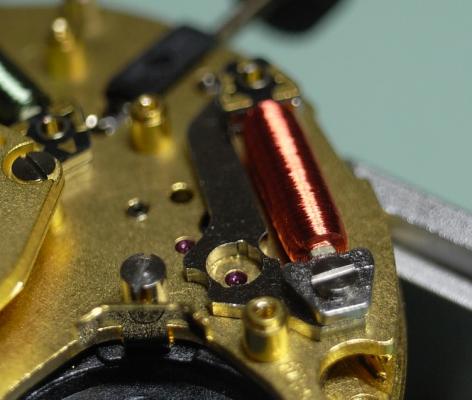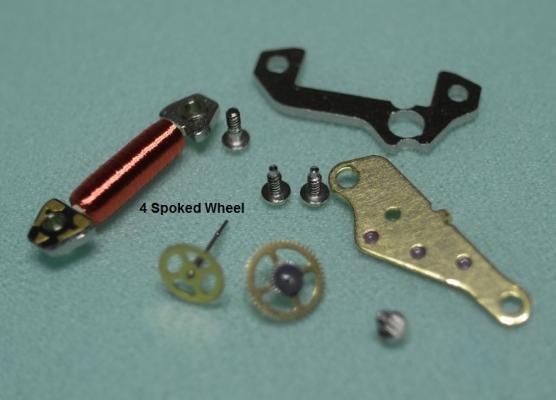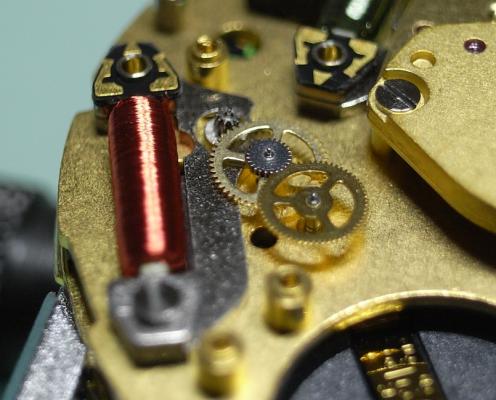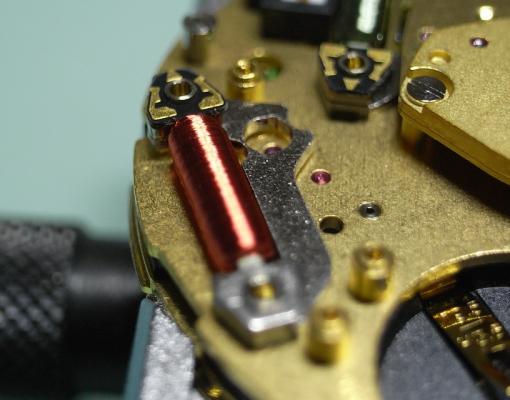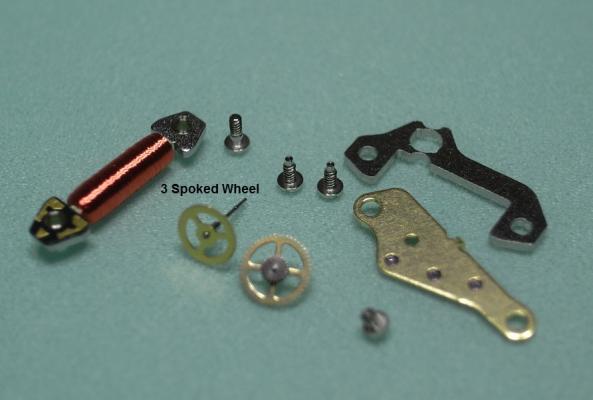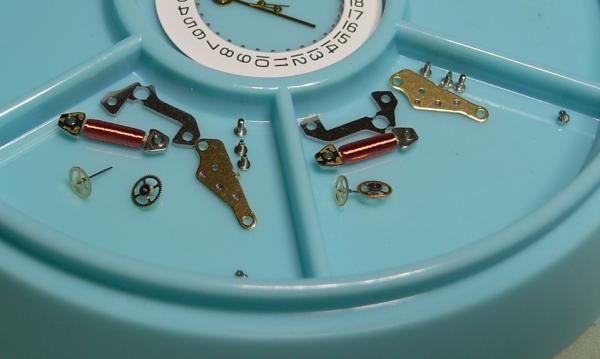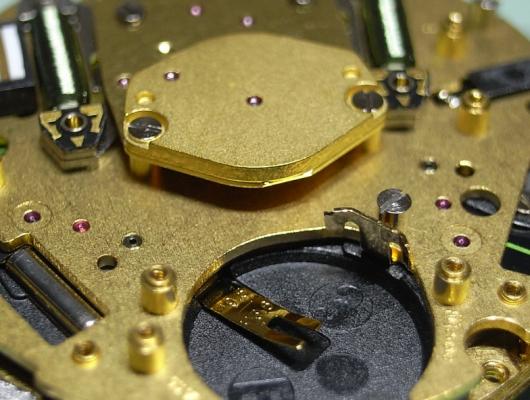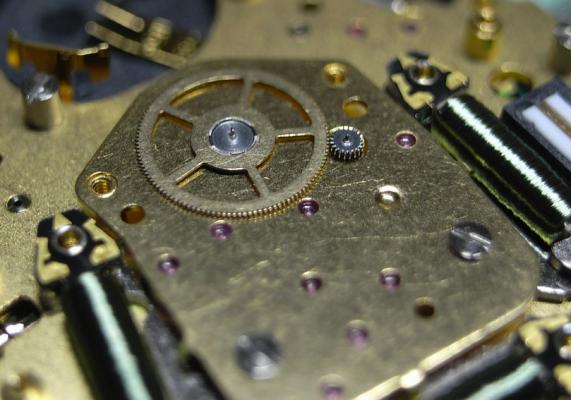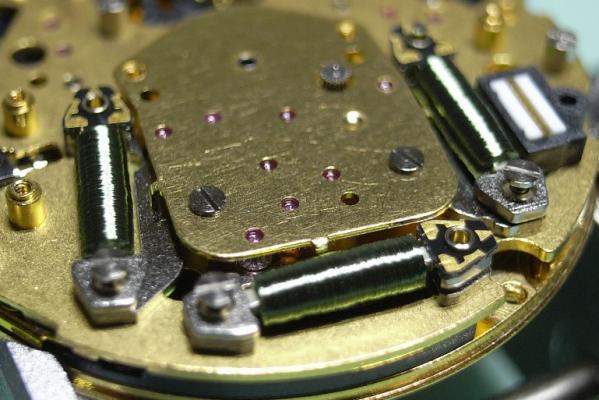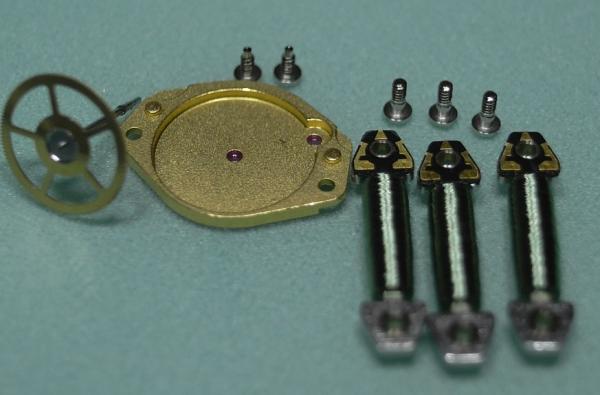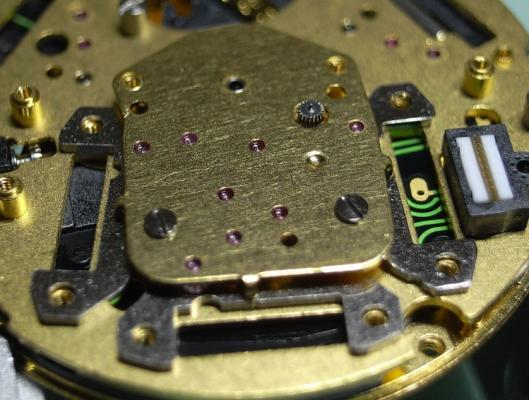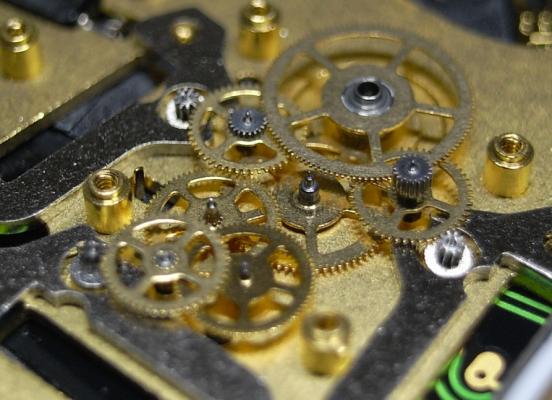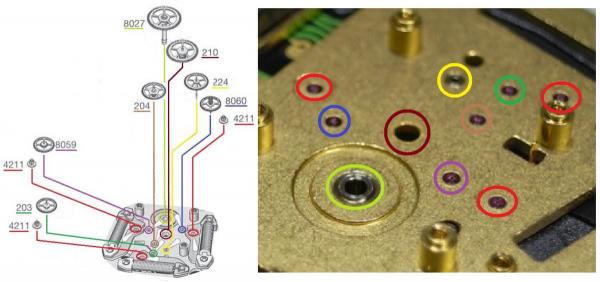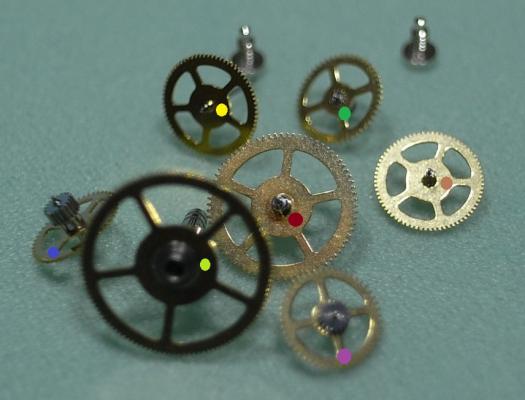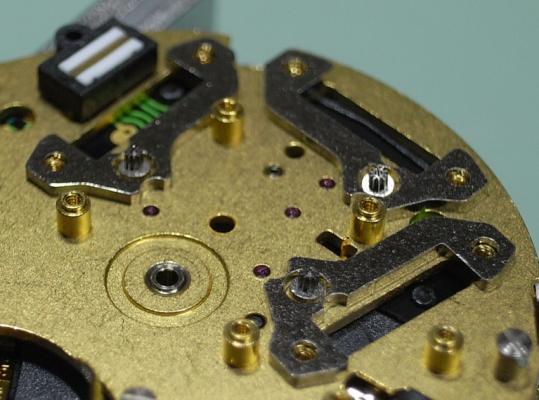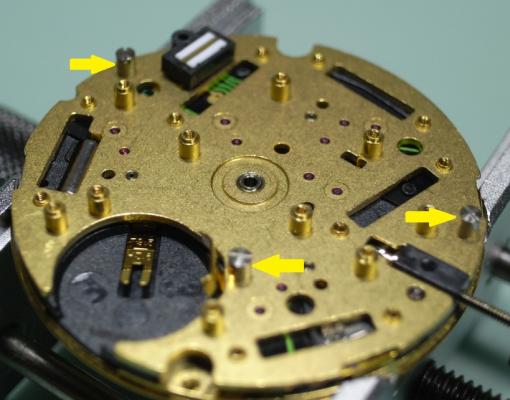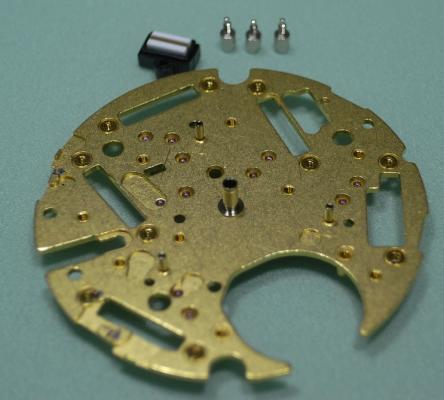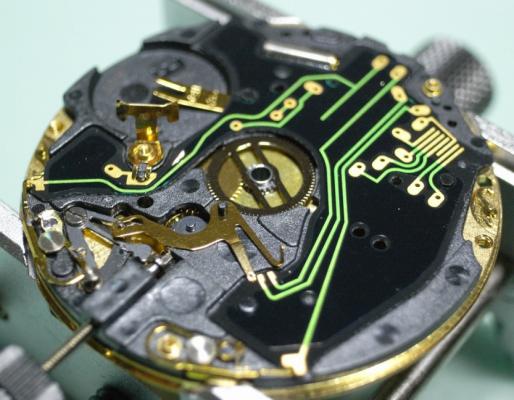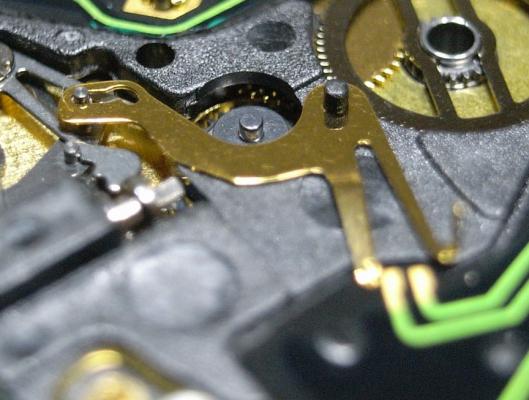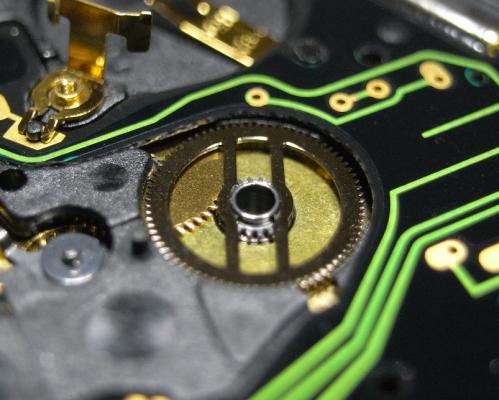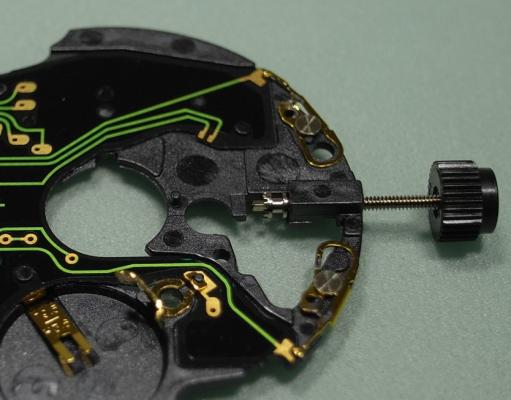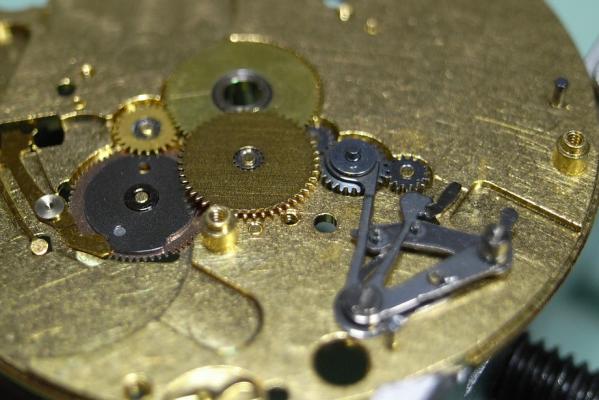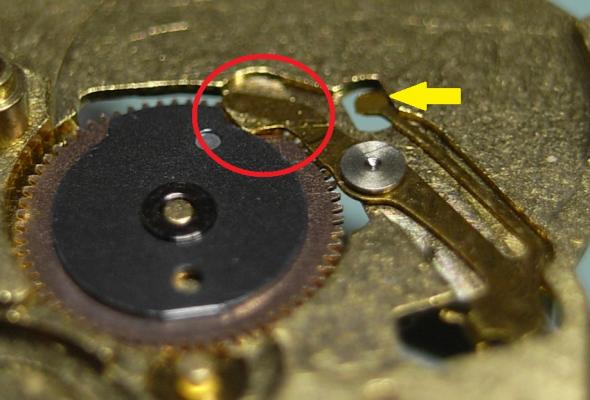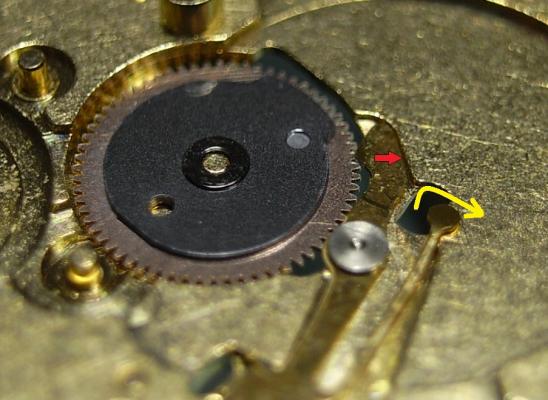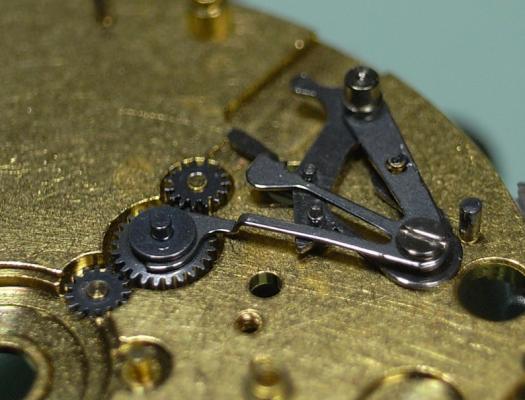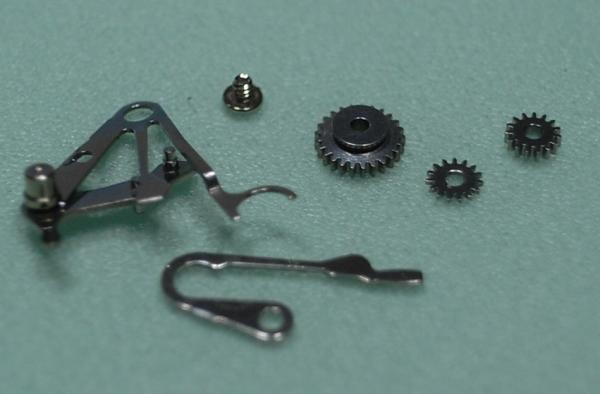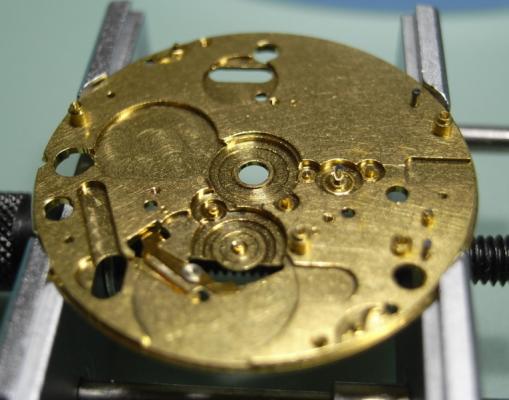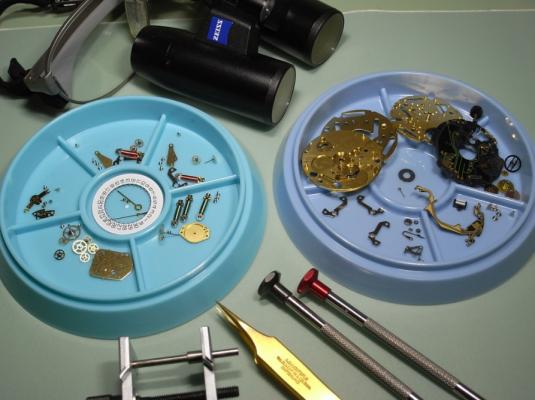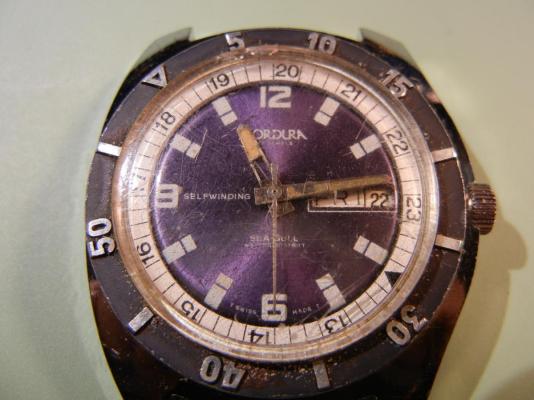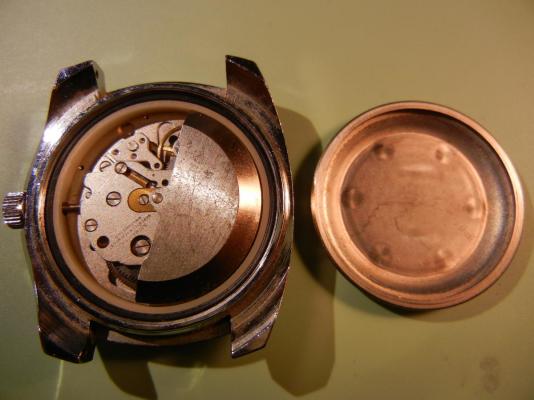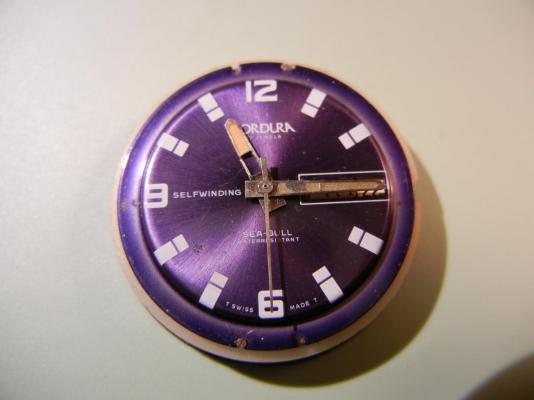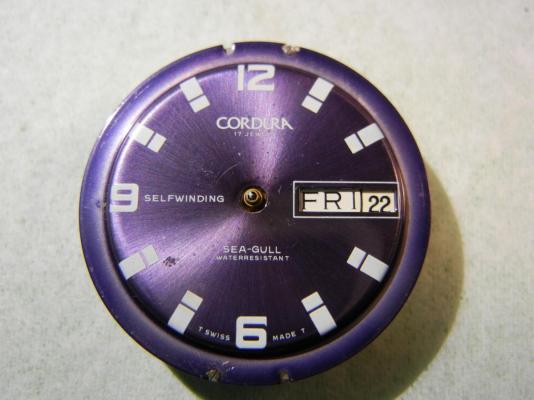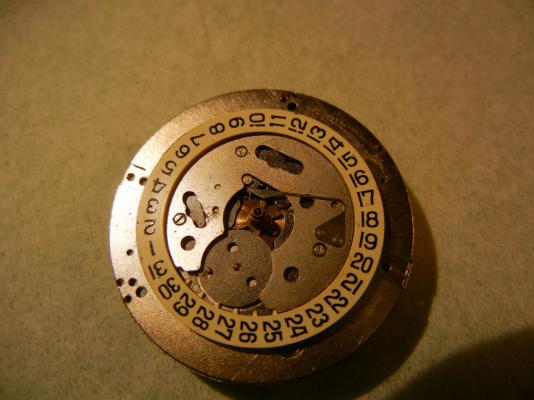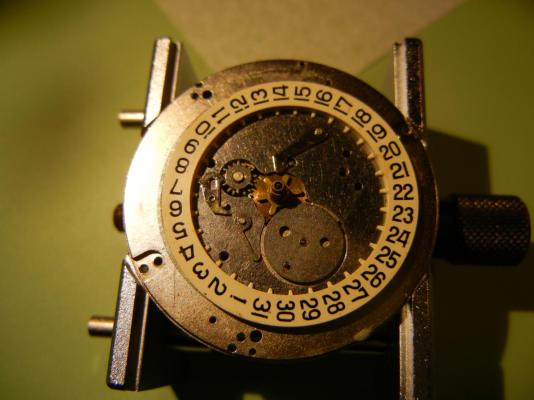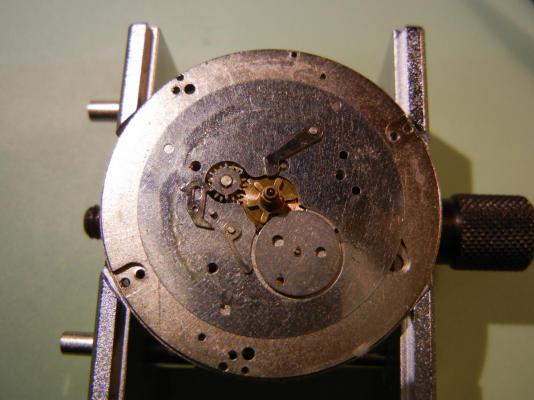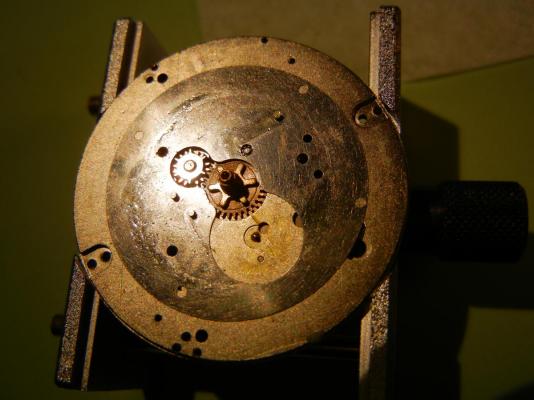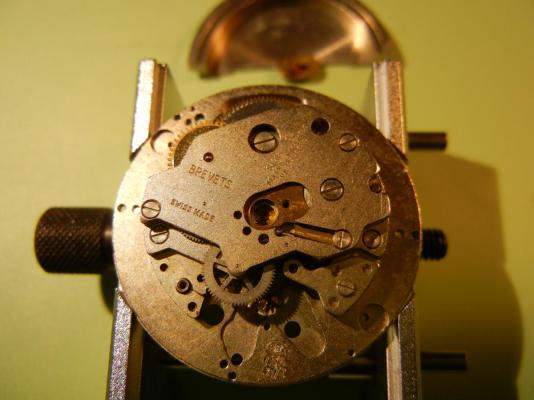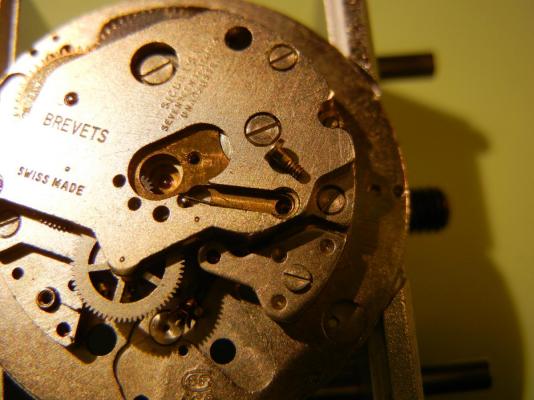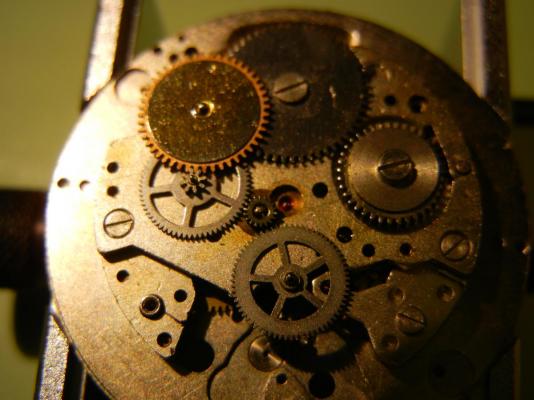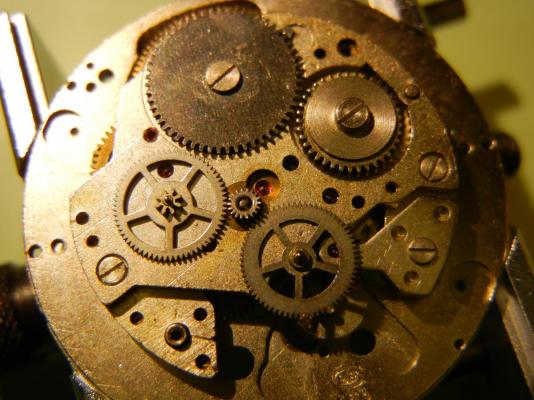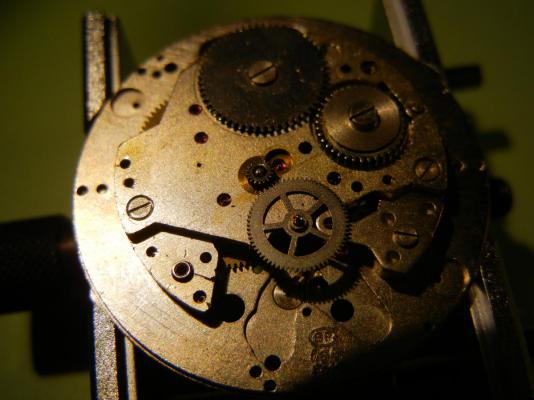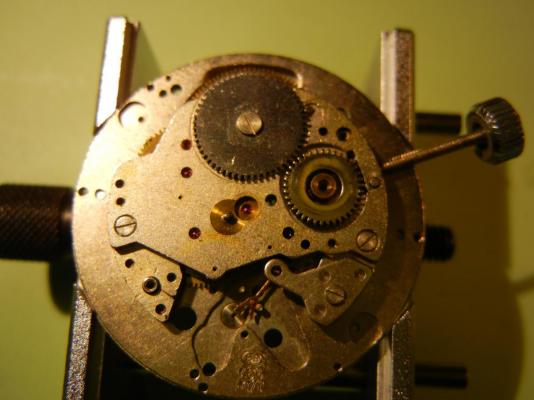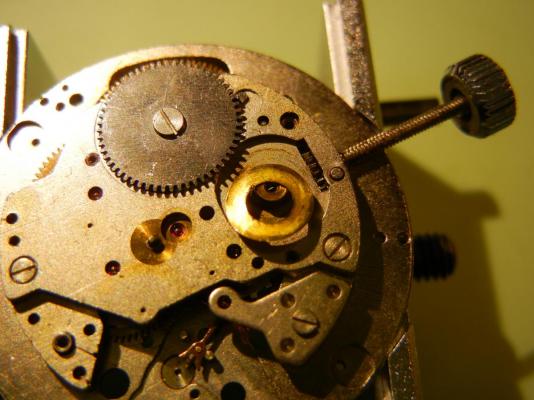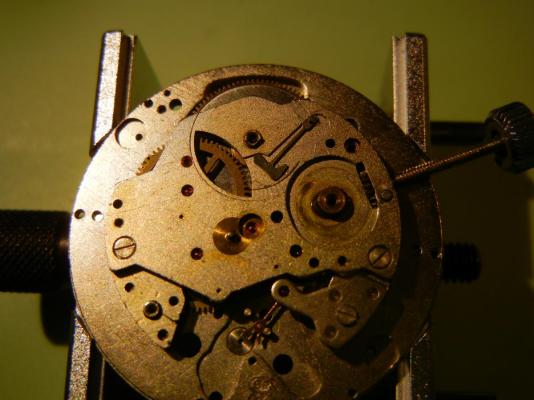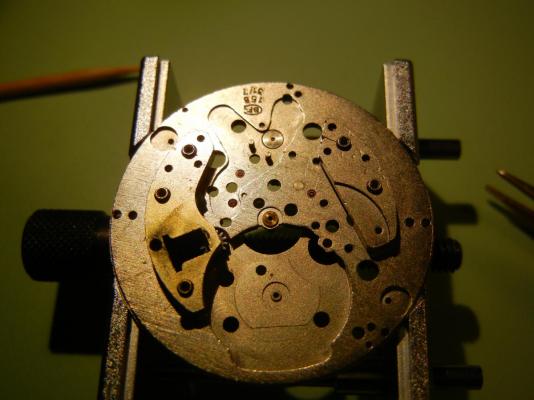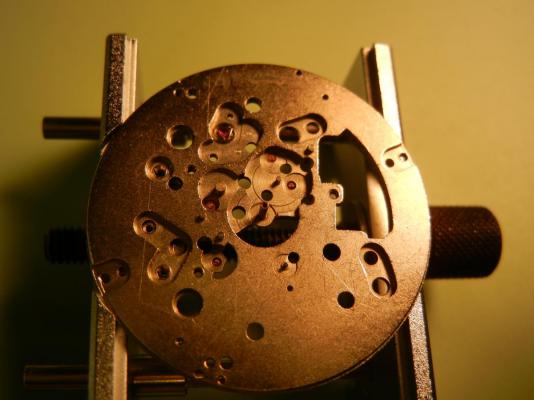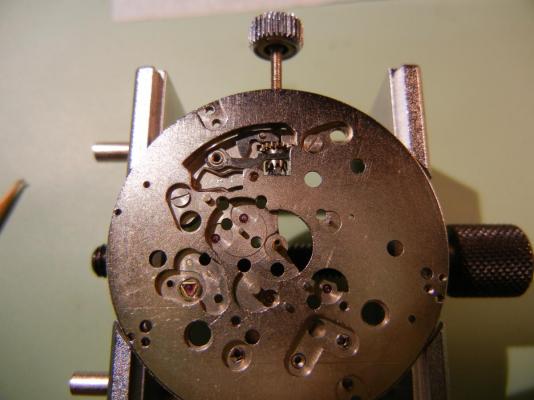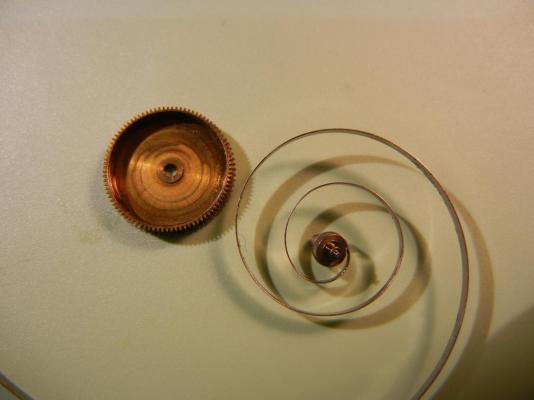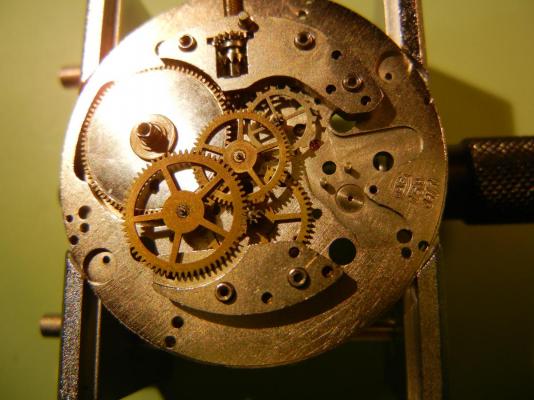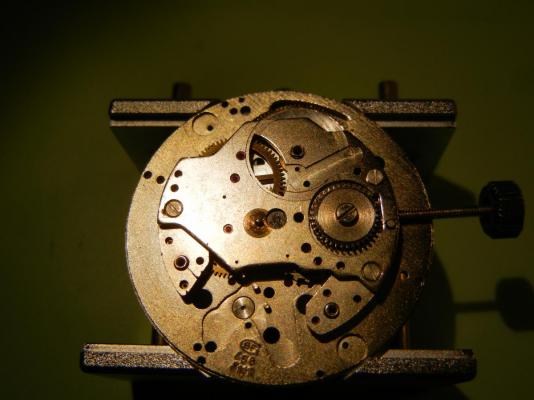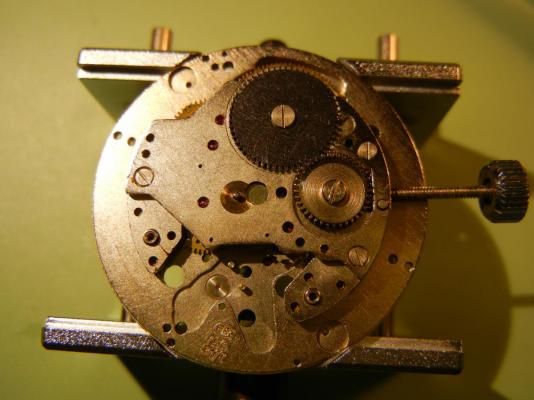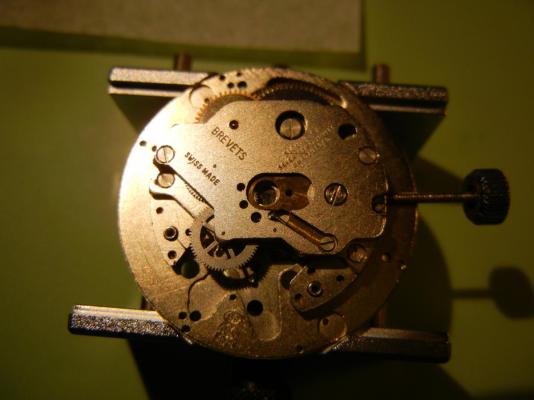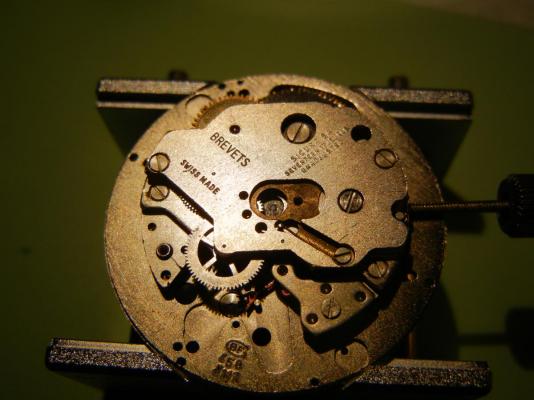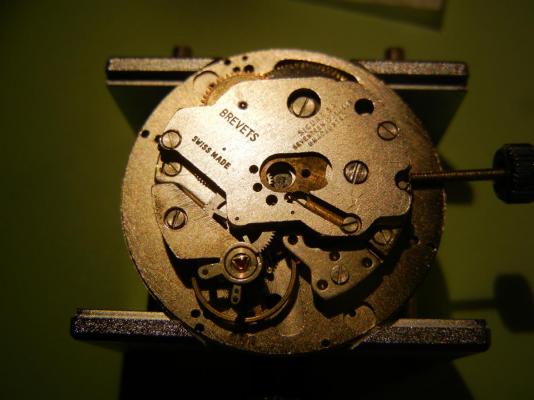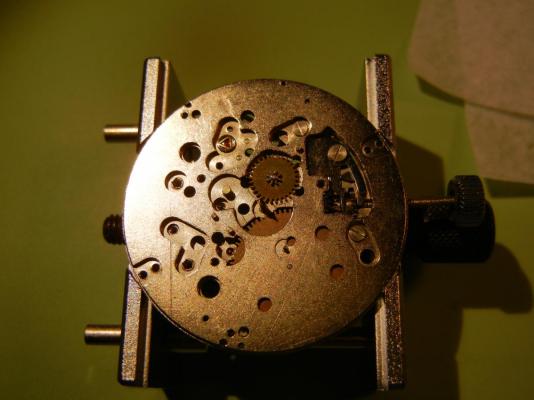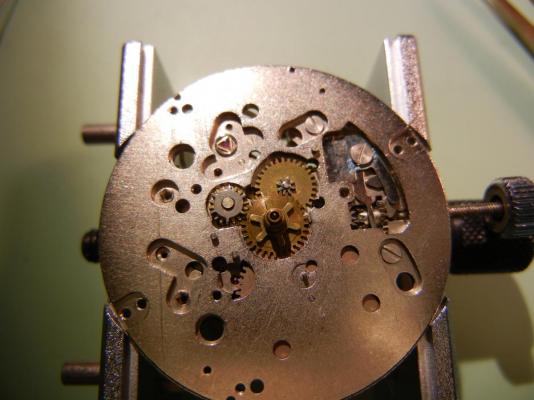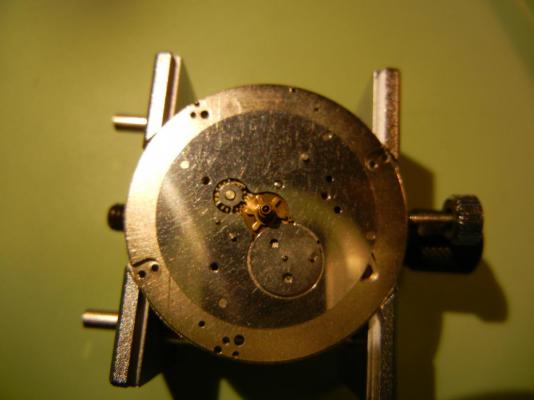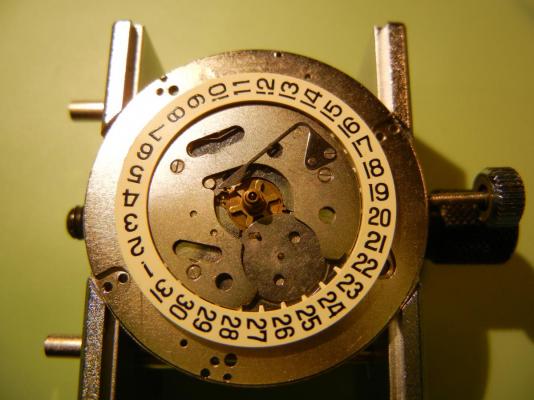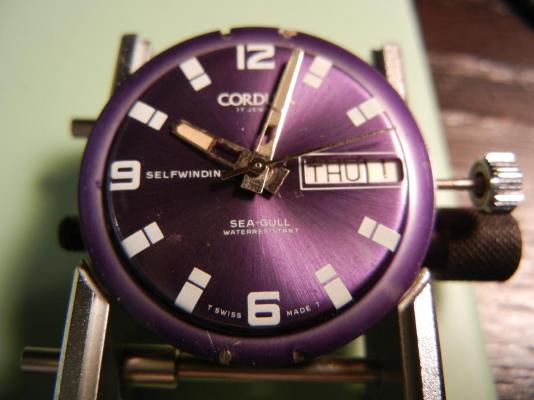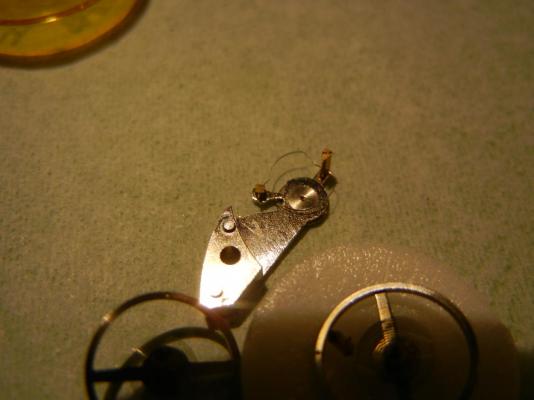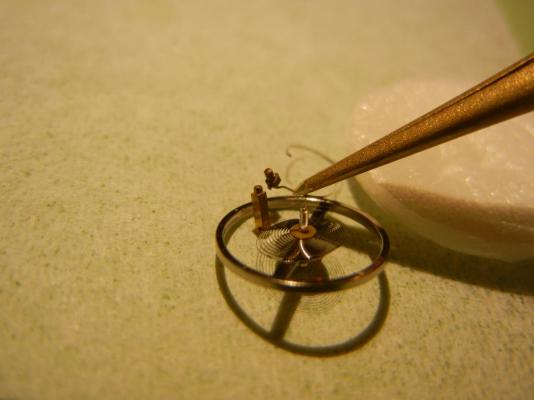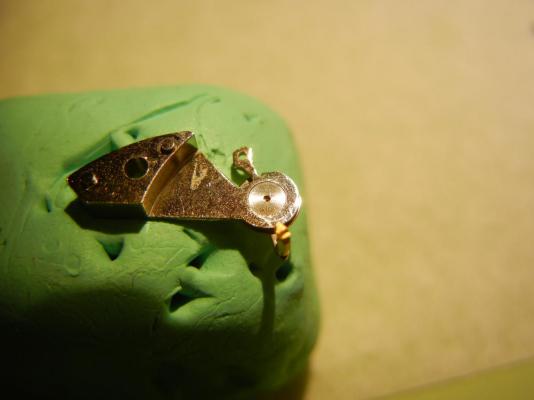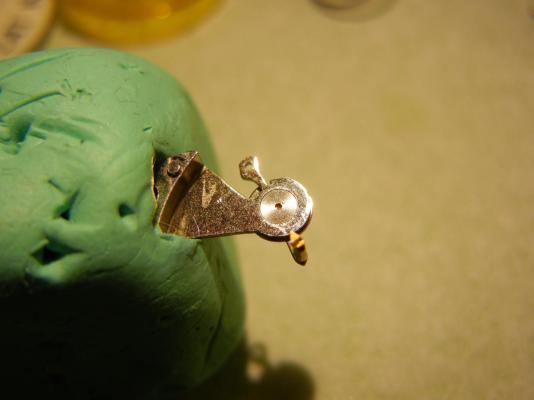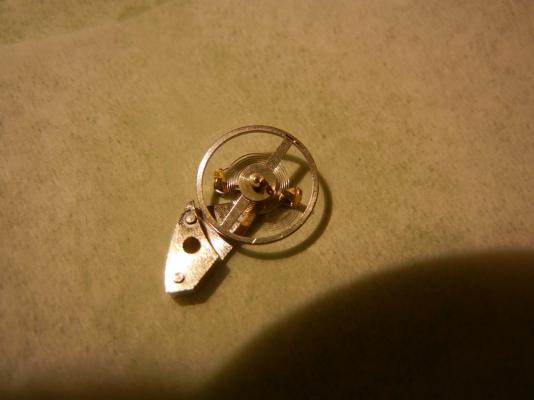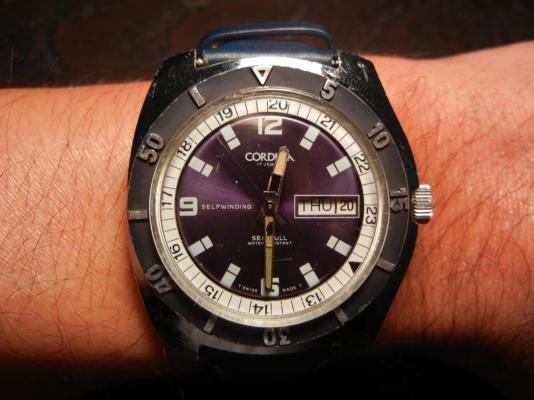Leaderboard
Popular Content
Showing content with the highest reputation on 06/10/15 in all areas
-
ETA 251.626 Service Walkthrough The 251.626 is often found in mid to high-end quartz chronographs on the market today. ETA 251.262.pdf It is a fairly complex quartz movement that has 5 motors, 2 with Red Coils, and 3 with Green Coils. To begin the service we start by removing the 3 Indicator Maintaining Small Plates, and Date Indicator. A 1.4mm screwdriver is all the is needed for every screw on the movement. Here's a reference photo of the 3 screws for the Indicator Maintaining Small Plates. There are no more components to remove from the dial side of the movement. Once the movement is turned over, remove the 2 screws that hold the Magnetic Screen. Once the Magnetic Screen is removed all the coils are very exposed, so work around these coils with great care. Here's a reference photo of the 2 screws for the Magnetic Screen. Next unscrew the 6 screws holding the Additional Printed Circuit and gently lift it off the movement. Store the Additional Printed Circuit away separately and safe from the rest of the parts. Here's a reference photo of the 6 screws for the Additional Printed Circuit. Next we tackle the 2 trains with the red coils. Right Side - Minute Counter Left Side - Hour Counter The right and left trains contain different size wheels and should be kept separate for ease of assembly. We shall start with the right side. Remove the Minute Counter Bridge Next remove the Gear Train and the Rotor. Next remove the Coil and Stator. Store the Coil away separately and safe from the rest of the parts. Here's a reference photo of the components and their corosponding screws. Note the 4 spokes on the Minute Counting Wheel. Remove the Hour Counter Bridge. Remove the Gear Train and the Rotor. Remove the Coil and Stator. Store the Coil away separately and safe from the rest of the parts. Here's a reference photo of the components. Note the 3 spokes on the Hour Counting Wheel. Store these 2 trains in separate sections in your parts tray, and when cleaning store them in sparate parts containers. Next remove the Chronograph Bridge Now remove the Chronograph Wheel Unscrew the Green Coils and remove them. Store the Coils away separately and safe from the rest of the parts. Here's a reference photo of the components and their corresponding screws. Remove the Train Wheel Bridge. Remove the Wheels of the Train. This is quite a complex train of wheels. So to assist you I've cleaned up the rather cluttered schematic supplied by ETA and colour coded each wheel and it's location on the Main Plate. Here's a reference photo of the top of the wheels, also colour coded to assist you. And also the underneath of the wheels, also colour coded to assist you. Remove the Rotors and Stators. Unscrew the 3 screws that hold the Upper Plate and remove it. Here's a reference photo of the Upper Plate, Connector, and the corosponding screws. This now exposes the Electronic Module. Remove the Stop Lever/Switch Remove the Cannon Pinion with Driver. Then remove the Electronic Module. Pull out the Stem and Sliding Pinion. Now store the Electronic Module away separately and safe from the rest of the parts. Remove the Minute Wheel, the Hour Wheel, and Contact Intermediate Wheel. Before we can remove the Date Indicator Driving Wheel, we need to pull back the Date Jumper. Gently lift the tab (Yellow Arrow) until it's at plate level and pull it backwards. This will pull the arm of the Date Jumper back and allow you to remove the wheel. Here's a reference photo of the wheels. Lastly we need to remove the keyless work. Unscrew the Setting Lever Spring and then remove the Setting Lever, Yoke, Driving Wheel, Internediate Setting Wheel No.1, and the Setting Wheel Here's a reference photo of the Keyless Work. The movement is now completely disassembled. I hope you've enjoyed this disassembly walkthrough and found it's given you the information and confidence to tackle this tricky but rewarding quartz movement. I will post the assembly procedures tomorrow, Lord willing :)2 points
-
what's up, My pin lever obsession and immersion continues, and I though I'd show a just-completed hairspring replacement on a Baumgartner 158 31/7 17 Jewel autowind day date diving watch. This movement is one of the "maxed-out" pin lever engines representative of the 70's. It keeps great time now, but it wasn't always the case.....we shall begin! Ebay purchase--$40.00, the usual issue: NOT running! Started the dial-side disassembly: and continued on the baseplate: Done! Now the rebuild. dial side: Afterward I TRIED changing the hairspring but ordered one with a shorter stud. This was not apparent to me at first (duh!) because I was so elated just having accomplised it, but I now know that the difference was quite obvious. The hairspring became entangled in the auto winding wheel which extends over the spinning balance and is very close: after wearing it one day it completely jumbled and snapped. I ordered another hairspring and you can see the difference in the length of the stud. This is crucial to its clearing the autowinding wheel gears. Prep for mounting new hairspring Finally in position: Thanks Mark! Done Hope this wasn't too tedious. I have a whole bunch of twisted hairsprings. but who wants to see pictures of that?!? next project I am doing an Omega Constellation 751: The last of the great vintage in house Omega movements. See you soon, JC1 point
-
Purchased some tweezers recently just for hairspring work. However I have been very disapointed with them although they grip the hairspring the slightest touch and the coil slips. Wishing I had purchased more Dumont tweezers I searched the internet to see if I could make them at least work better. Many sites talked about dressing tweezers and when I found this vid I realised I was not dressing them correctly. Just another one for that big learning curve.1 point
-
1 point
-
Yes, Hattori is a subsidiary of Seiko, named after Seiko CEO Shinji Hattori. I'm not sure but, I think when they decided they were going to sell movements to other watch manufacturers they didn't want the conflict of having their watch brand name 'Seiko' in non Seiko watches, because it might lead to intellectual property issues and also lead to people thinking Seiko make Animal watches and such, Hattori is basically their line of movements for the general watch manufacturing market, at least that's the best guess I can make.1 point
-
I must admit I did spit a bit today when I stabbed my finger with a graver. :pulling-hair-out:1 point
-
I used to have a cheap towel rail screwed to the side of my wardrobe covered in pipe insulation. Small battery powered light from Ikea above it.1 point
-
Drill a hole in the side and I like to have two of the same when one fogs up the other is ready to go. The hole helps. Sent from my iPhone using Tapatalk1 point
-
OK guys, really appreciate your thoughts. I've decided to spend that little extra as Mr beat suggested & purchase the elma. Hopefully it will last year's. Sent from my GT-I9505 using Tapatalk1 point
-
It's always tempting to try to repair some of the obvious signs of age - case, crystal, dial, hands, etc. In this instance, the dial is good and the hands are passable. (The strap came fitted new by the seller). But I'm always cautious in these cases. The case rear is good - quite well chromed and clean - which leaves the bezel and the crystal. The bezel is of a gold-finished base metal and is well "brassed". Not much can be done there other than re-chrome it - which I won't do because it's not worth it. But I might try some very careful and gentle polishing with Autosol. The crystal is high-domed - typical for its period - and has slight scratching across the surface, but is not yellowed (being glass). So I'm actually inclined to leave it - unusual for me because I normally like to replace them. The movement was serviced by the seller - whatever that might mean. It was set by me this morning and is currently correct almost to the second, and the regulator is almost bang in the middle of the -/+ mark. So - no messing with this one. It is what it is - a nice, simple, 75-year old wristwatch that cost me very little.1 point
-
1 point
-
1 point





